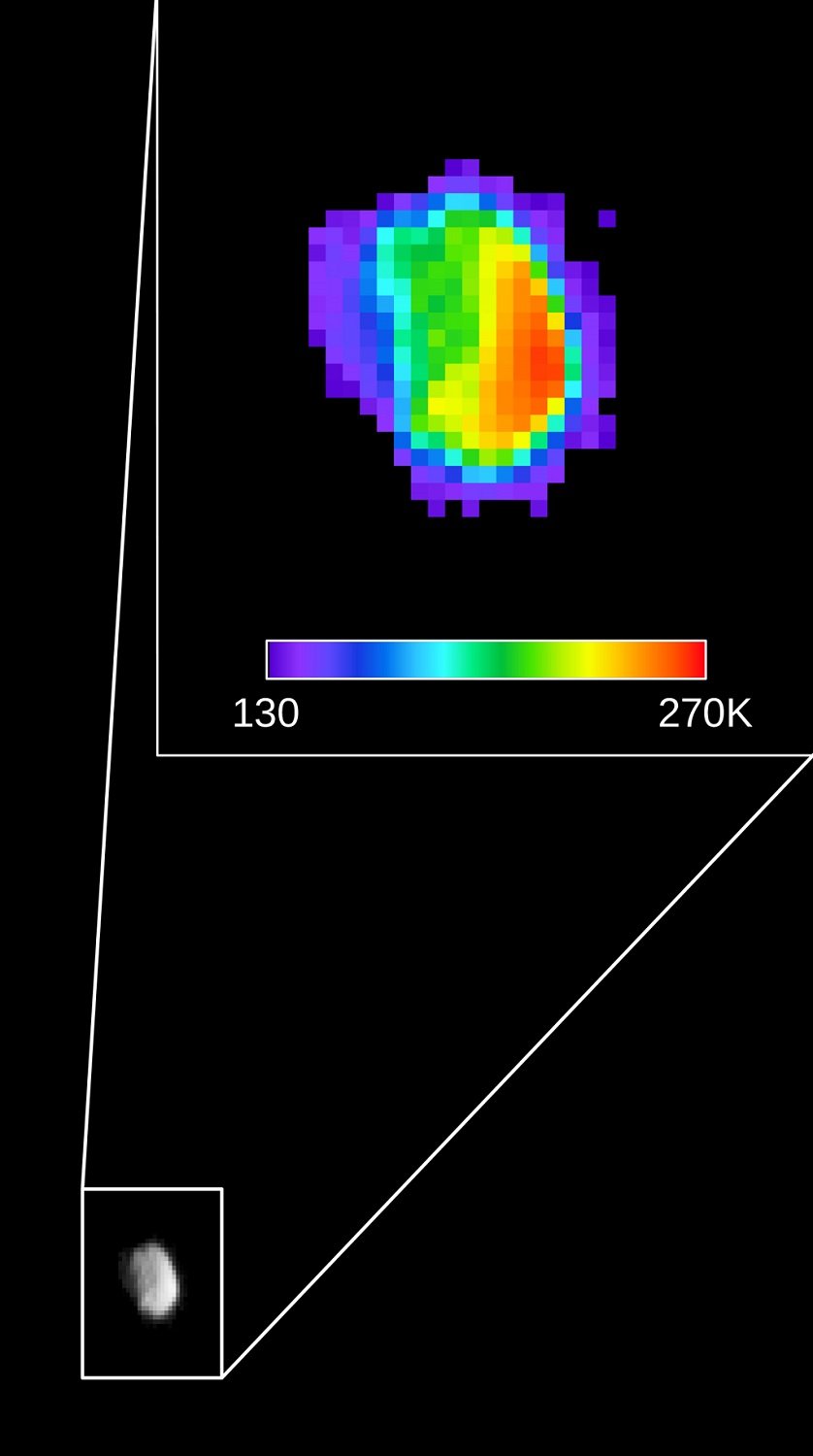Nasa’s longest mission to the mars has received its first glance to Mars’ moon Phobos i.e., Martian moon Phobos. Scientists observed Phobos using the Thermal Emission Imaging System (THEMIS) camera on NASA‘s Mars Odyssey orbiter on Sep 29.
Phobos has an oblong shape with an average diameter of about 14 miles (22 kilometers). Many high-resolution images were taken but none of them were available with the infrared information. Scientists suggest this observation a yield information about the mineral composition of the surface, as well as the surface texture.

THEMIS Deputy Principal Investigator Victoria Hamilton said, “Part of the observed face of Phobos was in pre-dawn darkness, part in morning daylight.”
By integrating visible-wavelength and infrared data, scientists were able to map its color-coded image to determine its surface temperature. According to scientists, it will be a future remote station for further research.

Identifying images from left to right sequentially represents the times of day on the Mars’ moon. It suggests details on Martian’s surface including, how quickly the ground warms.
Hamilton said, “Including a predawn area in the observation is useful because all the heating from the previous day’s sunshine has reached its minimum there. As you go from predawn area to morning area you get to watch the heating behavior. If it heats up very quickly, it’s likely not very rocky but dusty instead.”
Since Odyssey started circling the Red Planet in 2001, THEMIS has given compositional and warm properties data from all finished Mars, however at no other time imaged either Mars’ moon. At Sep 29, the perception was done and approved the spacecraft could safely do so.
Normally, Odyssey keeps the THEMIS camera pointed straight down as the spacecraft orbits Mars. In 2014 scientists at Lockheed Martin Space Systems, Denver; and NASA’s Jet Propulsion Laboratory, Pasadena, California developed some procedures and rotated the spacecraft. Scientists used same procedures for imaging Martian moons.

Odyssey Project Scientist Jeffrey Plaut of JPL said, “We now have the capability of rotating the spacecraft for THEMIS observations. There is heightened interest in Phobos because of the possibility that future astronauts could perhaps use it as an outpost.”
Hamilton said, “We want to get observations under all types of lighting, fully daylit, a small crescent, during an eclipse. We hope this is the first of several observations that will help us understand Phobos and Deimos.”
Scientists are now planning to advance additional opportunities at different illumination phases of Phobos and Deimos.
